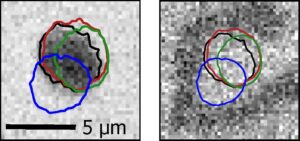
Additional information:
https://www.uni-mainz.de/presse/aktuell/15662_DEU_HTML.php
Publication:
R. Gruber et al., Skyrmion pinning energetics in thin film systems, Nature Communications 13, 3144, 6. Juni 2022, DOI: 10.1038/s41467-022-30743-4

Additional information:
https://www.uni-mainz.de/presse/aktuell/15662_DEU_HTML.php
Publication:
R. Gruber et al., Skyrmion pinning energetics in thin film systems, Nature Communications 13, 3144, 6. Juni 2022, DOI: 10.1038/s41467-022-30743-4
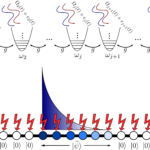
Publication:
Riccardo J. Valencia-Tortora, Nicola Pancotti, and Jamir Marino, PRX Quantum 3, 020346 (2022)
https://journals.aps.org/prxquantum/abstract/10.1103/PRXQuantum.3.020346
We welcome Iryna Kononenko from the National Academy of Sciences of Ukraine, Sumy, Ukraine. She will join us for work on thin film materials exploration. We are looking forward to a successful collaboration.
Institute of Physics
Staudinger Weg 7, Room 03-431
55128 Mainz
Contact: Robert Frömter - rfroemte@uni-mainz.de
Additional Information: TOPOCOM | Dynamics and Topology (uni-mainz.de)
I will present a novel concept that blends spintronics and quantum thermodynamics to generate
electricity. This concept is invoked to explain our experimental observations of electrical generation
across oxide [1] and molecular spintronic devices [2] that comprise paramagnetic centers
sandwiched between electrodes with full transport spin polarization. The presence of so-called
quantum resources [3,4], leading to a source of work of quantum origin called ergotropy, appears [2]
to be manifest in sub-kBT spectral features, as well in an apparent signature of a phase transition of
the spin fluctuations on the paramagnetic centers. I will discuss our present research tracks to better
understand this spintronic quantum engine. General info may also be found at
http://www.spinengine.tech.
References:
[1] Katcko, K. et al. Spin-driven electrical power generation at room temperature, Commun. Physics 2,
116 (2019).
[2] Chowrira, B., Kandpal, L. & et al. Quantum advantage in a spintronic engine with coherently
coupled ultrafast strokes using molecular superexchange, arXiv:2009.10413.
[3] Bresque, L. et al. Two-Qubit Engine Fueled by Entanglement and Local Measurements, Phys. Rev.
Lett. 126, 120605 (2021).
[4] Klatzow, J. et al. Experimental Demonstration of Quantum Effects in the Operation of Microscopic
Heat Engines, Phys. Rev. Lett. 122, 110601 (2019).
If you are interested to join this seminar talk, please contact the TopDyn team (topdyn@unimainz.de) for the zoom link.
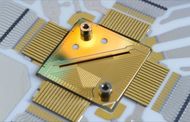
Quantum computers promise unprecedented computing power for applications where conventional data processors based on "zeros and ones" fail. In the new Trapped-Ion Quantum Computer for Applications project, 25 partners from research institutions are now working together with industrial partners to develop quantum computer demonstrators implemented together with users of quantum computers. The partners will tackle major technical challenges to realize quantum computer demonstrators made in Germany and to facilitate 24/7 access for users.
Additional information: https://www.uni-mainz.de/presse/aktuell/14778_ENG_HTML.php
Contact: Professor Dr. Ferdinand Schmidt-Kaler, Quantenbit group, QUANTUM, Institute of Physics, JGU
The ATIQ project is an extension of the IQuAn project.
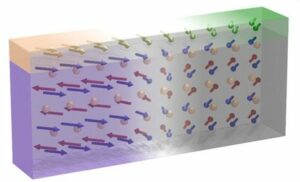
Additional information:
https://www.uni-mainz.de/presse/aktuell/14647_ENG_HTML.php
Publication:
S. P. Bommanaboyena et al., Readout of an antiferromagnetic spintronics system by strong exchange coupling of Mn2Au and Permalloy, Nature Communications 12: 6539, 11 November 2021, DOI: 10.1038/s41467-021-26892-7
Physicists at Technische Universität Kaiserslautern in the team of Professor Dr. Herwig Ott have succeeded for the first time in directly observing collisions between highly excited atoms, so-called Rydberg atoms, and atoms in the ground state. Particularly interesting is that they can precisely identify the energy states of the individual atoms, which was impossible until now. The researchers have developed a custom microscope for this purpose, with which they were able to directly measure the momenta of the atoms. The processes observed are important for understanding interstellar plasma and ultracold plasmas generated in the laboratory. The study was published in the renowned journal “Nature Communications”.
Additional information on: https://www.uni-kl.de/en/pr-marketing/news/news/detail/News/new-study-physicists-identify-energy-states-of-individual-atoms-following-a-collision/
Publication: https://www.nature.com/articles/s41467-021-24146-0
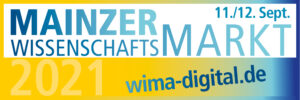
Additional information on: http://www.newspostalk.com/science/physics/mixed-approach-utilizing-diamond-probes-allows-nanoscale-imaging-of-magnetic-vortex-buildings/
Publication
Until Lenz et al. Imaging Topological Spin Buildings Utilizing Mild-Polarization and Magnetic Microscopy, Bodily Evaluate Utilized (2021). DOI: 10.1103/PhysRevApplied.15.024040, https://journals.aps.org/prapplied/abstract/10.1103/PhysRevApplied.15.024040